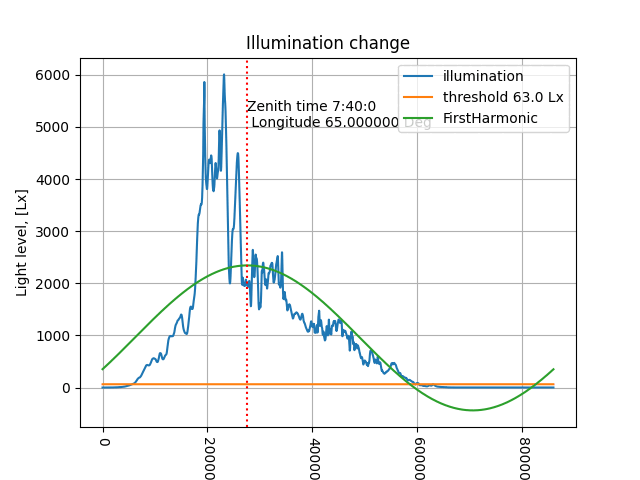Digest of science news for the week that we didn’t write anything about
An ancient galaxy larger than ours could revolutionize cosmologists' understanding of the evolution of the Universe.

Webb Space Telescope discovered in the early Universe, a galaxy whose mass does not fit into the traditional model of cosmology, claim authors of the study.
The galaxy, named ZF-UDS-7329, contains more stars than the Milky Way, despite forming just 800 million years after the Big Bang. This means that they were somehow born without the participation of dark matter, which contradicts the standard model of galaxy formation.
How this could have happened is unclear, but like Webb's previous discoveries of other inexplicably massive galaxies in the early Universe, it threatens to overturn our understanding of how the first matter formed in the Universe, and perhaps the Standard Model of cosmology itself. Researchers published their findings February 14 in the journal Nature.
“The presence of these extremely massive galaxies so early in the universe challenges our standard model of cosmology,” study co-author Claudia Lagos, assistant professor of astronomy at the International Center for Radio Astronomy Research, said in a statement. This is because massive dark matter structures that, thought to be essential components for holding together early galaxies that had not yet formed so early in the universe's existence, Lagos added.
According to modern theories, a halo of dark matter (a mysterious and invisible substance that is believed to make up 25% of the modern Universe) combined with gas and formed the first germs of galaxies. After 1-2 billion years in the life of the Universe, the early protogalaxies reached adolescence, forming into dwarf galaxies that began to devour each other, turning into ones like our own.
A growing black hole is the brightest object ever observed by astronomers

In the new research, published in the journal Nature Astronomy, describes the brightest object ever observed by astronomers. It is a black hole with the mass of 17 billion suns, absorbing more mass every day than the sun.
It had been known about for decades, but because it was so bright, astronomers assumed it must be a nearby star. Only recent observations have shown that it is located at a great distance and shines very brightly.
An object that is a quasar got the name J0529-4351. This name simply refers to its coordinates on the celestial sphere—a way of projecting objects in the sky onto the inner surface of the sphere.
Considering how bright 3C 273 appears to us and how far away it is, it should be extremely bright. The only known source of energy for such extreme brightness is material falling into a supermassive black hole. Therefore, quasars are the most actively growing black holes in the Universe.
Microplastics found in all human placentas tested

It's been more than three years since scientists first discovered microplastics in four different human placentas, and it turns out that this was just the tip of the iceberg.
A few years later, in early 2023, researchers announced that they had found microscopic particles of plastic waste in at least 17 different placentas. By the end of 2023, a local study in Hawaii analyzed 30 placentas that were donated between 2006 and 2021 and found that plastic pollution had increased significantly over time.
Using a new technique, researchers identified tiny particles and fibers of plastic less than a micron in size in the largest sample of placentas yet.
The team found microplastics in varying concentrations in all 62 tissue samples examined. Their concentrations ranged from 6.5 to 685 micrograms per gram of tissue, significantly higher than levels found in the human circulatory system.
No one yet knows how this plastic pollution affects the health of the fetus or mother. Although microplastics have been found in all major organs of the human body, including the brain, it is unknown whether these pollutants are temporary guests or an ongoing and cumulative health threat.
As plastic pollution continues to worsen, placental contamination may only increase as people inhale and ingest more plastic than ever before.
“The poison is determined by the dose,” explains biologist Matthew Campen from the University of New Mexico. “If the dose continues to increase, we start to worry. If we see effects on placentas, then it could affect the lives of all mammals on our planet. And that's not good.”
Determining how much microplastic accumulates in human tissue has proven extremely difficult, given the very small size of these particles.
For many years, scientists have been working to create a reliable detection method that would quantify the mass of these pollutants and identify the specific brand of plastic. Only then will it be possible to correctly assess their impact on health.
In the new research uses a new high-resolution method to scan for the presence of plastic in human blood and tissue. The researchers first separated most of the biological material from the solid plastic particles, using chemicals and ultra-fast ultracentrifuges to separate very small molecules. They then broke down the polymers to identify their specific compounds.
Astronomers have discovered hidden satellites in the orbits of Neptune and Uranus

Using ground-based telescopes, astronomers have discovered three previously unknown satellites in space around Uranus and Neptune: one orbiting Uranus and two near Neptune. Thus, the official number of satellites of Uranus reached 28, and Neptune – 16.
The moons have not yet received official names, but in accordance with the naming traditions of the satellites for both planets, the new Uranian moon will receive a name from the works of Shakespeare, and the Neptunian moons will be named after Nereid sea goddesses from Greek mythology.
“The three newly discovered moons are the faintest ever found around these two icy giant planets using ground-based telescopes,” speaks astronomer Scott Sheppard of the Carnegie Institution for Science. “Special image processing was required to detect such faint objects.”
The new Uranian satellite, first spotted by the Magellan telescope in November 2023, was confirmed by data obtained in 2021. Tentatively named S/2023 U1, it is the first new Uranian moon discovered in more than 20 years.
Its size is about 8 kilometers (5 miles) across, making it the smallest of the moons of Uranus and one of the smallest known moons in the Solar System. Its orbital period is 680 days.
The brighter of the two Neptunian moons, tentatively designated S/2002 N5, was first spotted by Magellan in September 2021 and again in October, with subsequent observations in 2022 and 2023. Its size is 23 kilometers across and its orbital period is 9 years.
Finally, in 2021, a smaller and fainter new Neptunian moon was spotted using the Subaru Telescope. Tentatively named S/2021 N1, it is 14 kilometers across and has an orbit around Neptune of 27 years.
MIT unveils guidelines for commercialization of perovskite solar cells

A team led by the Massachusetts Institute of Technology created A “guide” to tuning the surface properties of perovskites, an alternative to silicon. This has huge implications for solar energy.
Perovskite solar cells, based on a mineral with a similar crystalline structure, have been a major research topic in the renewable energy sector for several years. They have enormous potential to change the solar energy landscape, offering a tantalizing combination of high efficiency, low production costs, and the unique ability to be used on a variety of substrates, from rigid glass to flexible materials.
Their versatility opens up new possibilities for solar installations, from city buildings to portable off-grid systems. However, perovskites have faced significant challenges, particularly with their durability and maintaining efficiency as they increase in size—issues that have hampered their transition from laboratory research to commercial viability.
Breakthrough new work from a team of researchers led by the Massachusetts Institute of Technology in collaboration with scientists from around the world. Their innovative Jobpublished today in the journal Nature Energy, addresses two major problems faced by perovskite solar cells: fragility and the challenge of maintaining high efficiency over large module areas.
Lead author Dane de Quillette, a recent MIT postdoc who is now co-founder and chief scientist of MIT's Optigon company, said:
This work is essentially a guide to tuning surfaces that contain many defects so that energy is not lost on the surfaces. This is truly a great discovery for the field. This is the first work to demonstrate how to systematically control and create surface fields in perovskites.




